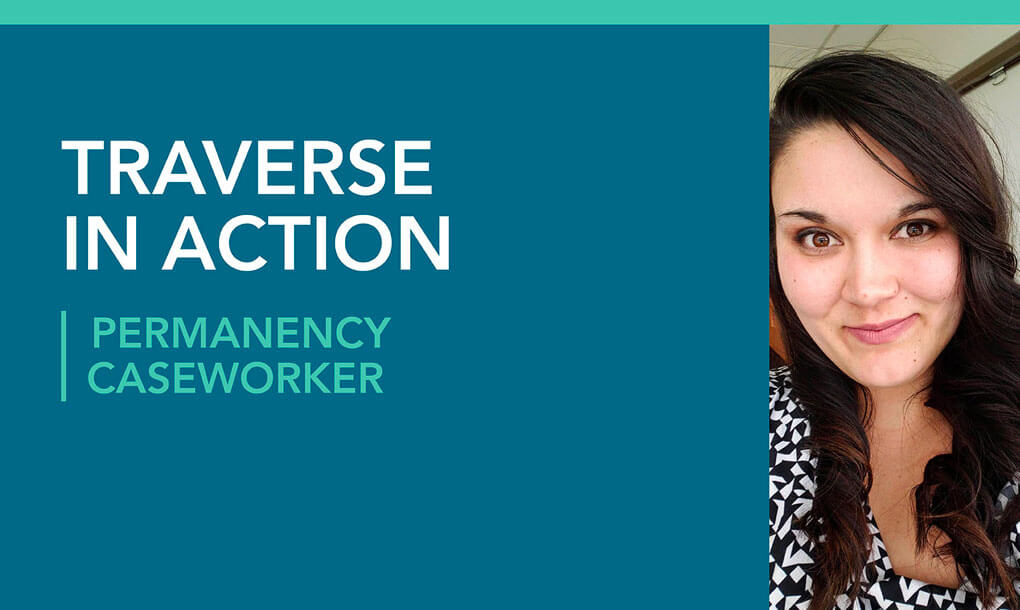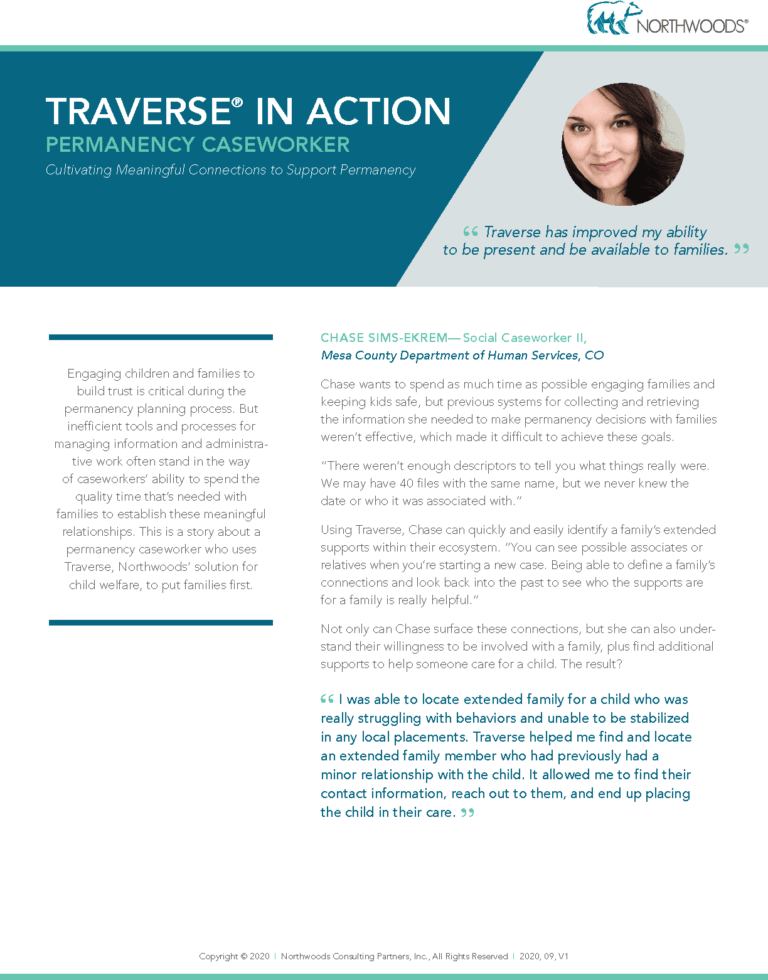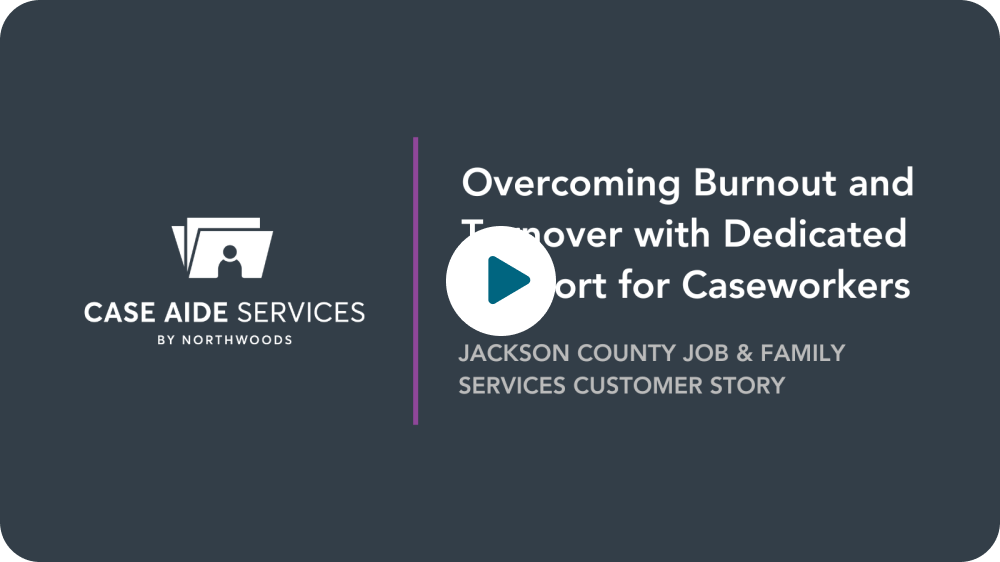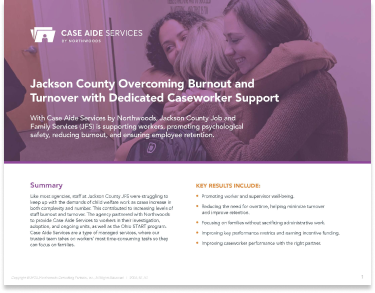Cultivating Meaningful Connections to Support Permanency
Chase uses Traverse® to put families first. Chase can quickly find the information she needs to identify a family’s extended support network, establish trusting relationships, and make permanency decisions.

Summary
Chase wants to spend as much time as possible engaging families and keeping kids safe, but previous systems for collecting and retrieving the information she needed to make permanency decisions with families weren’t effective, which made it difficult to achieve these goals.
Using Traverse, Chase can quickly and easily identify a family’s extended supports within their ecosystem. Not only can Chase surface these connections, but she can also understand their willingness to be involved with a family, plus find additional supports to help someone care for a child.

This job is about cultivating human connection. Traverse has let me do that more authentically. I can put families first and not the paperwork, not the bureaucracy, not the tiny to-do list.”
– CHASE SIMS-EKREM, Social Caseworker II, Mesa County Department of Human Services

Cultivating Meaningful Connections to Support Permanency
Chase uses Traverse® to put families first.
Challenges
Inefficient tools and processes for managing information and administrative work stood in the way of Chase’s ability to spend quality time with families to establish meaningful relationships.
Not enough structure.
Previous systems didn’t offer enough descriptors to find the right document. “We may have 40 files with the same name, but we never knew the date or who it was associated with.”
Too much information
Chase says flipping through a paper file or trying to go through other databases to find one name associated with a child would be virtually impossible.

I was able to locate extended family for a child who was really struggling with behaviors and unable to be stabilized in any local placements.”
– CHASE SKIMS-EKREM, Social Caseworker II, Mesa County Department of Human Services
Solution
Using Traverse, Chase can quickly and easily identify a family’s extended supports within their ecosystem. Not only can Chase surface these connections, but she can also understand their willingness to be involved with a family, plus find additional supports to help someone care for a child.
Traverse also makes it easier for Chase to collaborate with the rest of the permanency team. Regardless of where anyone is working, caseworkers can share documents and information with each other and their supervisors, plus get things back in a timely manner.=
Results
Chase can spend more time doing work the work she loves and less time documenting it.
Time savings.
Chase estimates she saves 6-10 hours every week because she can upload and find documents in minutes.
Focus on families.
Chase says she can now spend 70% of her time with families, whereas before it was only 40%. She can make release forms, consent forms, or other documentation available to them in real time too.
Supporting permanency.
Chase located extended family for a child who was unable to be stabilized in any local placements. She found and located an extended family member who had previously had a minor relationship with the child and placed the child in their care.



